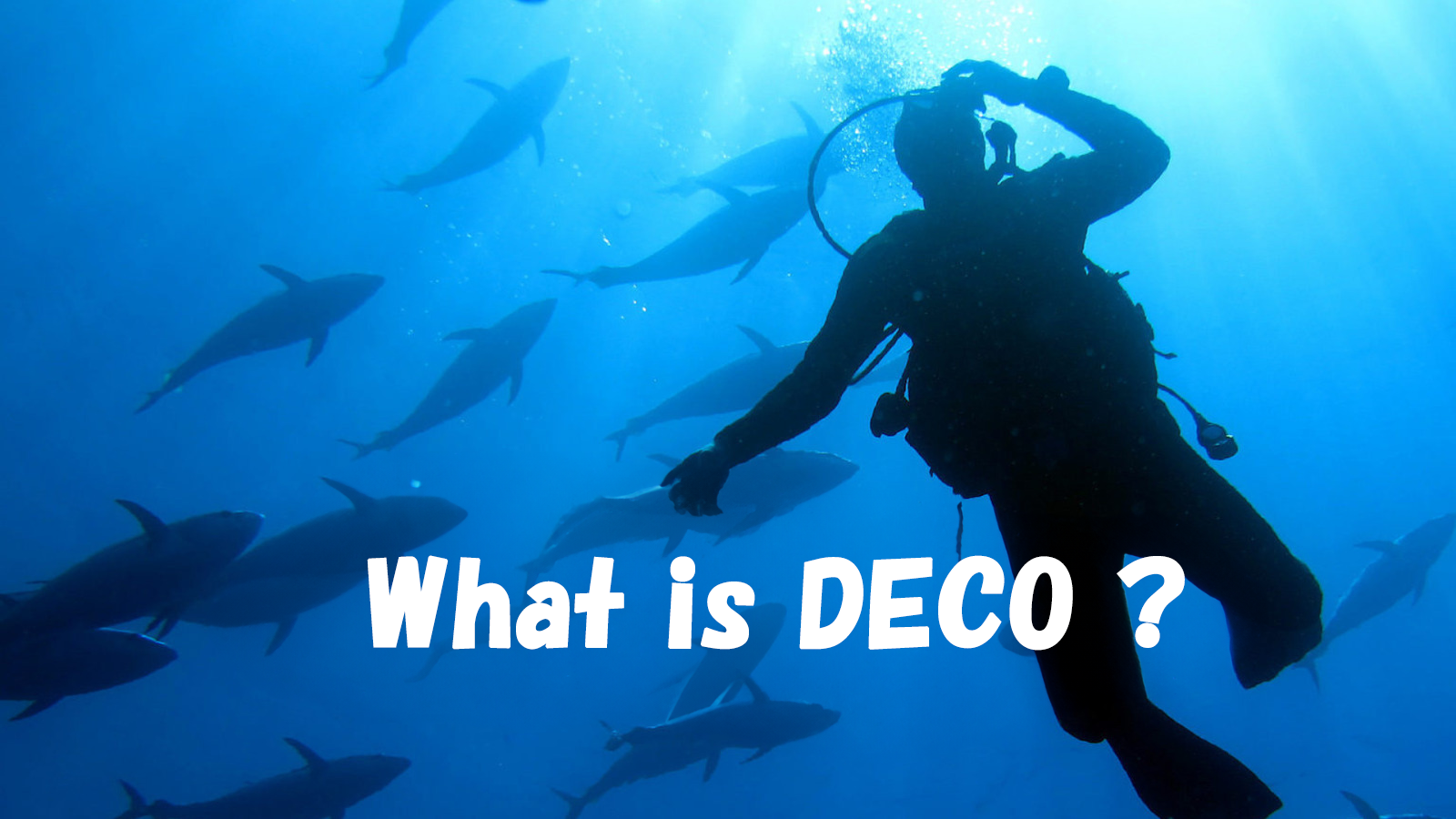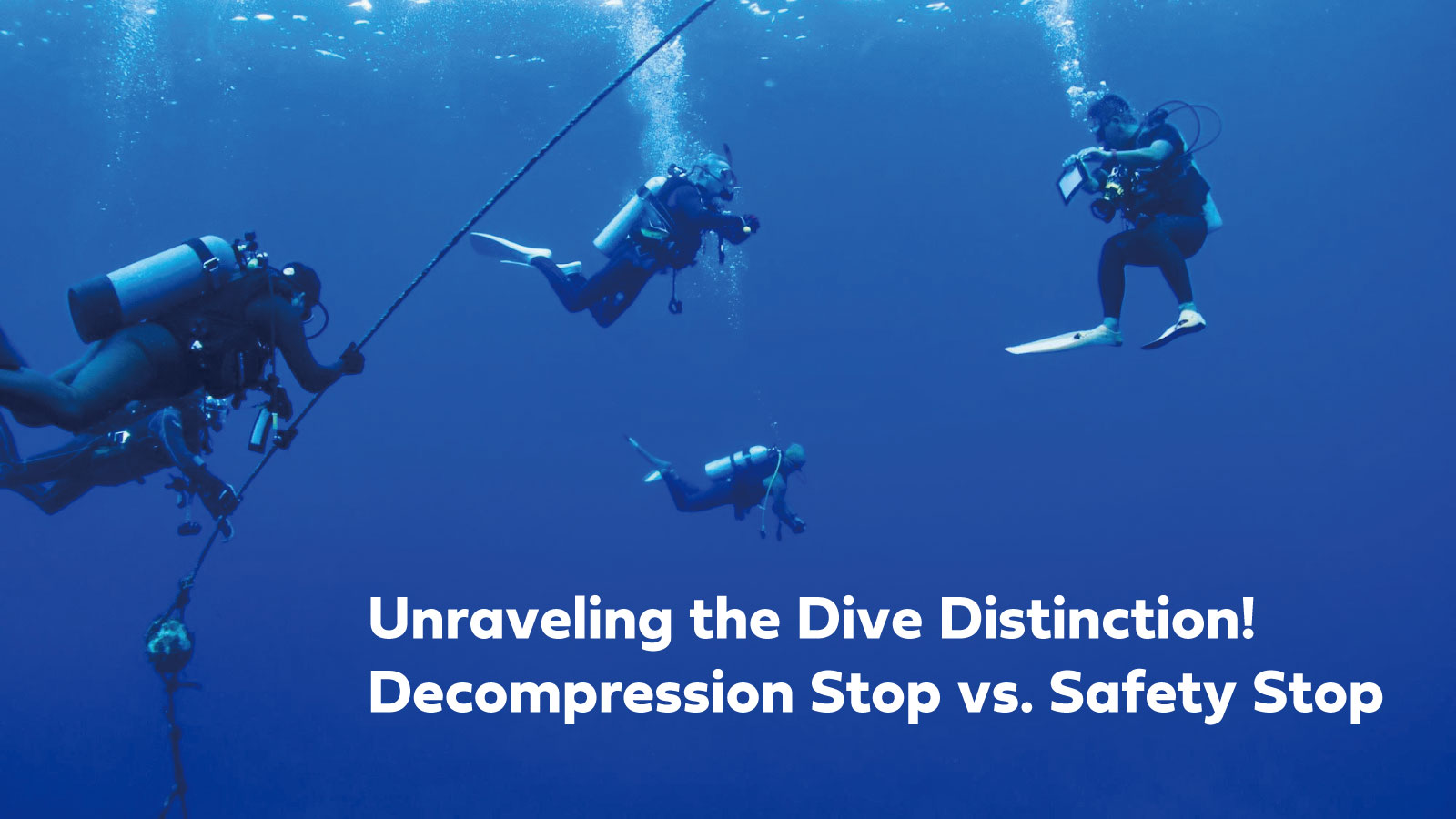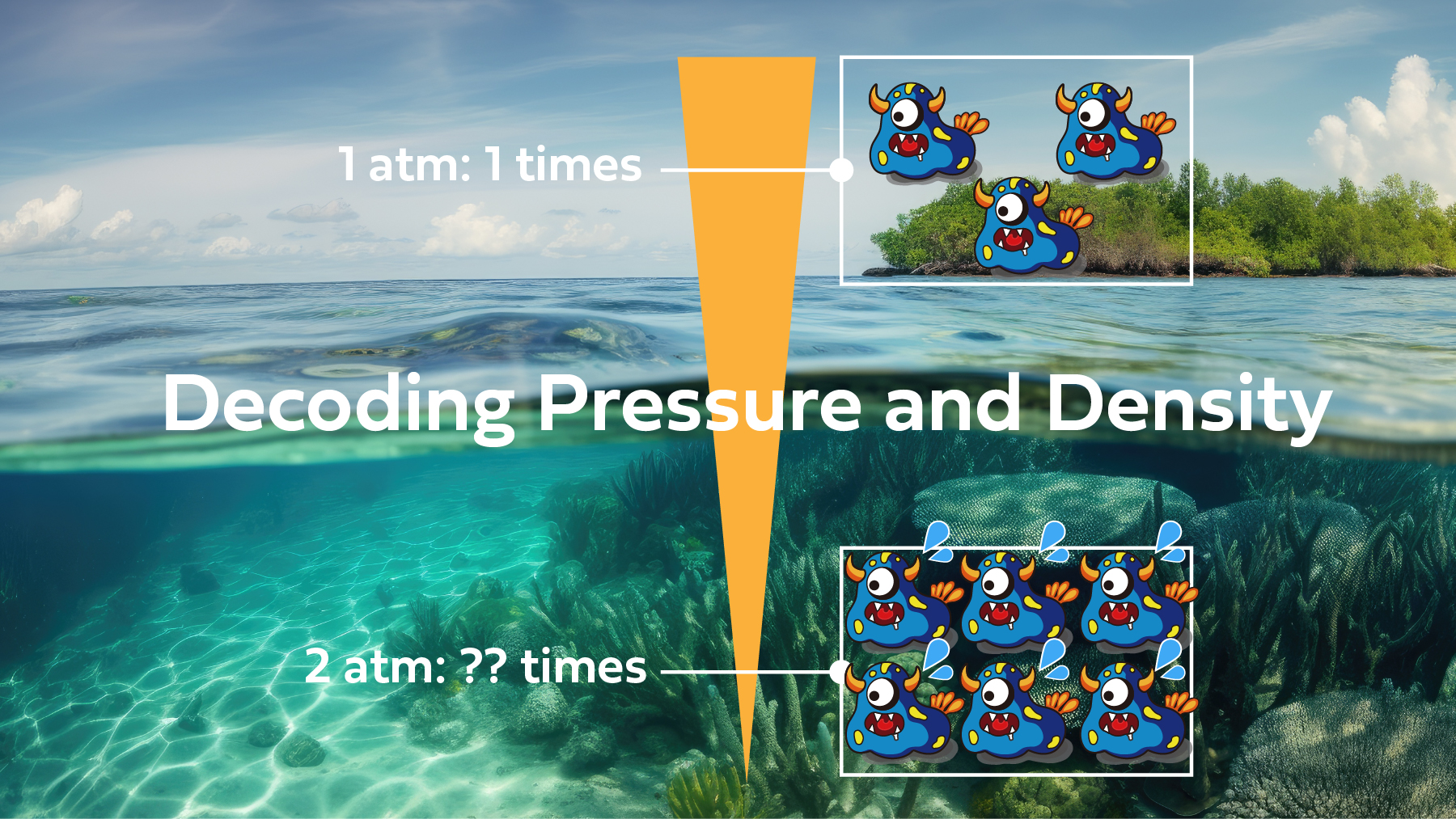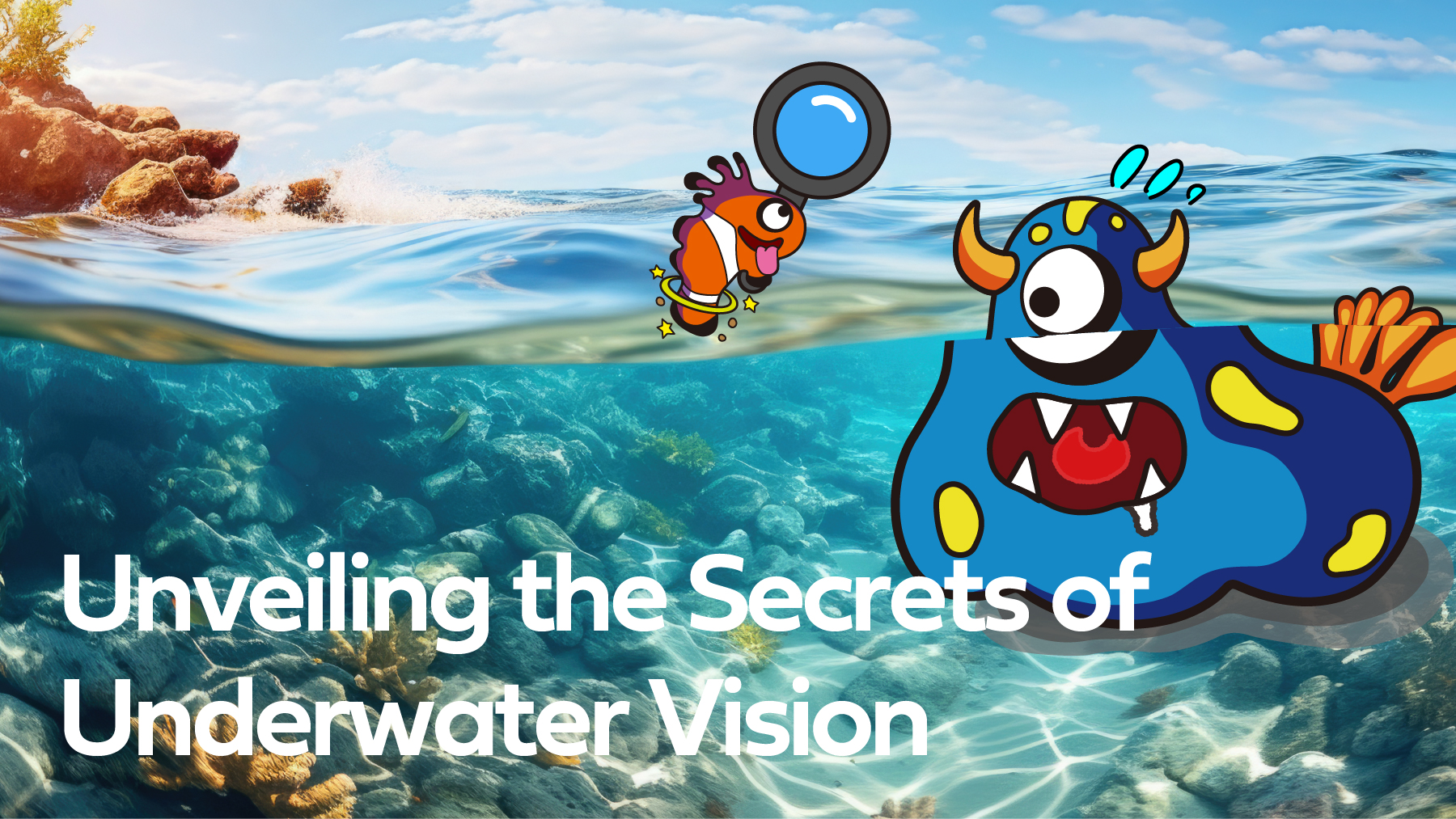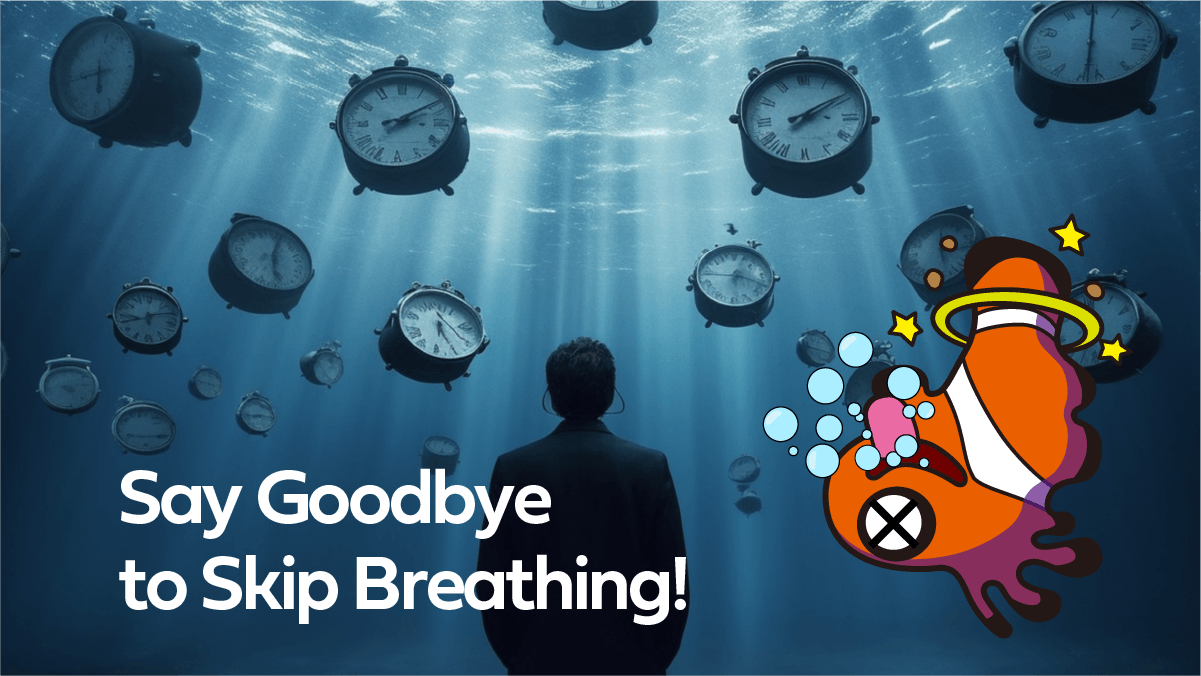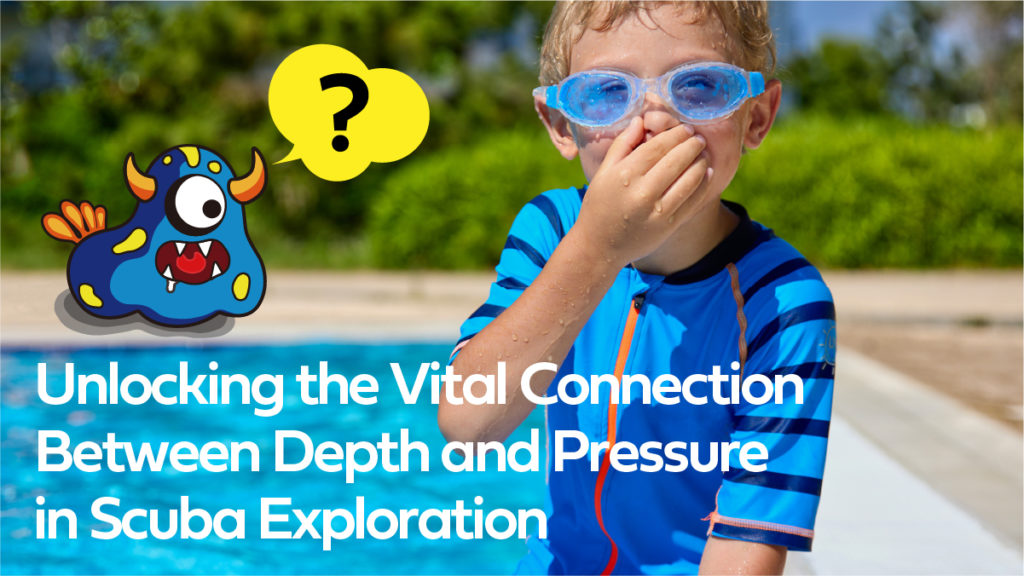
Remember those carefree days playing in the pool? Have you ever tried diving to the bottom of the pool, hoping to touch the floor only to be deterred by the excruciating pain in your ears? Some of you who have already experienced scuba diving may have encountered ear pain during your dives.
The changing pressure in the water cause this discomfort, which affects the space inside your ears during scuba diving. This article will explore the relationship between depth and pressure, shedding light on why your ears may hurt while diving.
Depth and Pressure Relationship:
All objects are subjected to pressure from their surroundings. That includes your body as you sit in front of your smartphone right now. While you may not feel it, your body is bearing the weight of a massive column of air stretching overhead for about 500 km, all the way up to the boundary of space known as the atmosphere.
This weight creates what we call atmospheric pressure. On the ground, the atmospheric pressure is approximately 1013.25 hPa (hectopascals), which is equal to the force of about 1 kg.
Pressure refers to the amount of force acting on a given surface. As you can imagine, the pressure decreases when you climb a mountain. For instance, let’s take Mount Fuji’s summit, which stands at an elevation of 3,776 meters. At this altitude, you have a reduced column of air above your head.
Hence, the pressure that was 1013.25 hPa at sea level decreases to approximately 630 hPa at the summit of Mount Fuji. In Japan, we refer to the standard atmospheric pressure of 1013.25 hPa as “1 atmosphere” or “1 atm.” In some other countries, it may be referred to as “1 atm” as well.
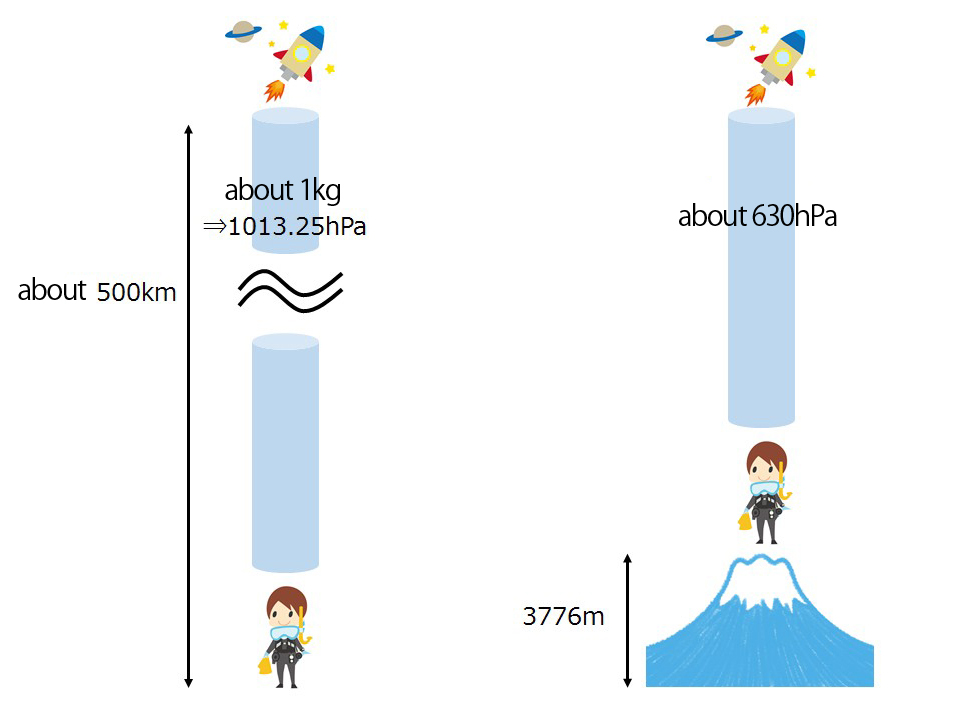
When you are scuba diving into the sea, you carry the weight of both the air above the water’s surface and the water column stretching down to your diving depth. This weight of the water column is what we call water pressure.
For every 10 meters of depth, the water pressure increases by 1 atmosphere. Thus, at a depth of 10 meters, the total pressure is 2 atmospheres. The combination of the original atmospheric pressure and water pressure.
Similarly, when you are scuba diving to up to 20 meters, the total atmospheric pressure increases by 2 due to the water pressure (2 atmospheres). The total pressure will be now equal to 3 atmospheres. Don’t forget to always include one atmospheric pressure!
Isn’t it a handy technique to keep in mind that the number of atmospheres of pressure rises by 1 for every 10 meters?
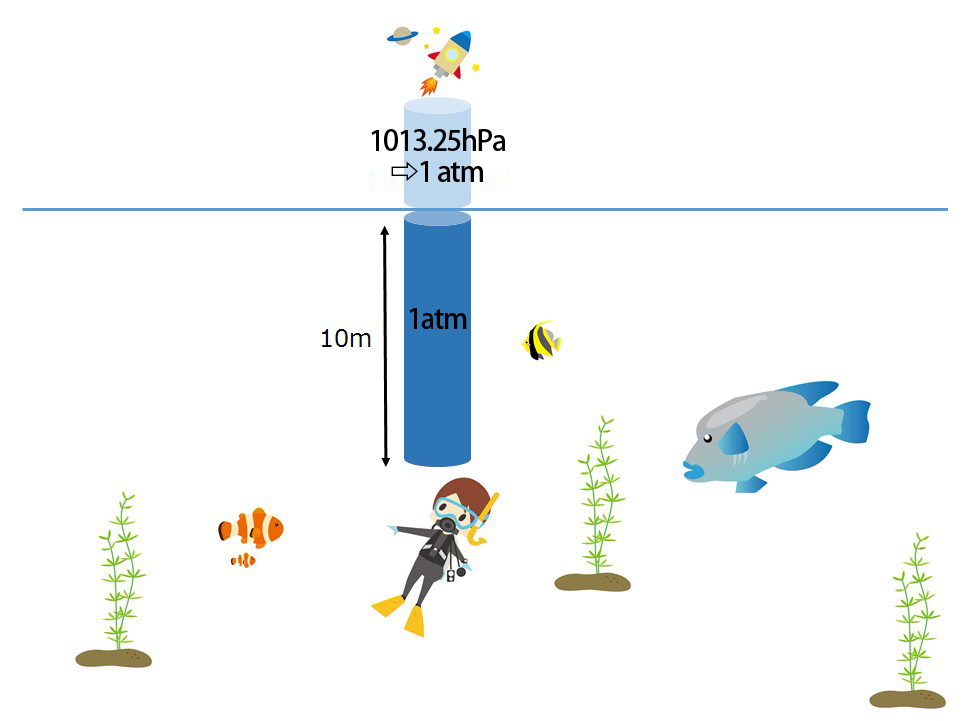
Now, here’s where it gets interesting.
We learned that 1 atmosphere represents the weight of the air column extending 500 km above us.
When we say that the pressure increases by 1 atmosphere for every 10 meters of depth, it means that the weight of a 10-meter column of seawater is equal to the weight of a 500 km column of air!
There’s a reason why I mentioned seawater. Seawater is heavier than freshwater due to the presence of salt.
Thus, the pressure is influenced by the weight of the water. In the case of freshwater, such as lakes, the pressure doesn’t increase by 1 atmosphere for every 10 meters of depth. Instead, it increases by 1 atmosphere for every 10.3 meters.
It becomes a little bit more complex… but isn’t it fascinating?
If the weight of 10 meters of freshwater and the weight of the air column spanning 500 km are equal, it would make sense. Yet, it’s not freshwater but seawater that shares the same weight.
Doesn’t it make you appreciate the meticulous design of the Earth? (laughs)
Relation to Equalizing Pressure (Ear Clearing):
Now, let’s go back to the ear pain you experienced at the beginning, causing you to give up diving. As experienced scuba divers may already know, there’s a solution for that called “equalizing pressure” or “ear clearing.”
We’ll explain the ear clearing process in detail another time. For the time being, there’s only one important thing to note: Perform ear clearing more often at shallower depths!
It becomes evident when we observe the changes in water pressure with depth.
When you dive from the surface (0 meters depth) to 10 meters, the pressure increases from 1 to 2 atmospheres. In other words, it doubles. However, when you progress from 10 meters to 20 meters, the pressure increases from 2 atmospheres to 3 atmospheres. In this case, it increases by 1.5 times.
Can you see the difference? It’s clear that the rate of change is greater at shallower depths.
It is usually perceived during the early stages of the scuba diving session. When you reach around 5 to 8 meters depth, ear clearing issues are more likely to occur. So, be vigilant and make sure not to overlook it!


